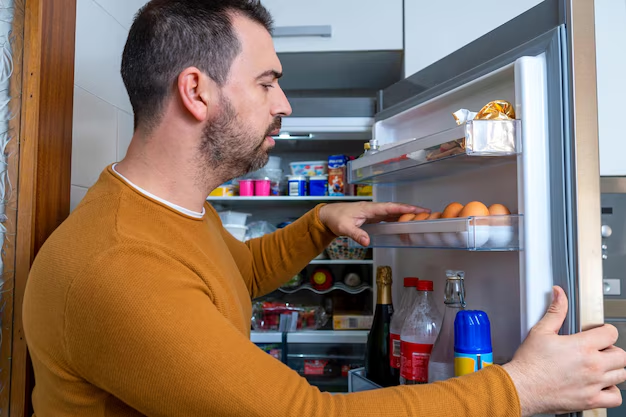Understanding Refrigerator Energy Consumption: How Much Electricity Does Your Fridge Use?
Have you ever opened your electricity bill and wondered why it’s so high? One of the main culprits could be your refrigerator, quietly humming away in the corner of your kitchen. But how much electricity does a refrigerator actually use, and what can you do to manage this usage more effectively? This question is more than just about numbers on a bill—it's about understanding your appliances, optimizing their performance, and making eco-friendly choices.
How Do Refrigerators Consume Energy?
The Basic Operation 🌡️
Refrigerators work by removing heat from their interior to keep food cool. This is done through a cycle of evaporation and condensation of a refrigerant, powered by a compressor. The compressor is the heart of the refrigerator’s cooling system and is responsible for most of its energy consumption. When the compressor runs, it draws electricity to maintain the desired internal temperature you set.
Variations in Energy Usage
Not all refrigerators are created equal. Factors that influence energy consumption include:
- Size: Larger refrigerators naturally require more energy. A double-door or side-by-side model will generally use more electricity than a compact or single-door fridge.
- Age and Efficiency: Older models can be less energy-efficient than newer ones, especially those equipped with the latest energy-saving technology.
- Usage Habits: Frequently opening the door lets cool air escape, causing the compressor to work harder. Similarly, overloading or placing warm food inside can increase energy demand.
Measuring Refrigerator Energy Use
Understanding kWh 📏
Refrigerator energy consumption is typically measured in kilowatt-hours (kWh). This unit represents the amount of energy used by the appliance per hour. You can find the kWh consumption for most appliances in their manuals or on their energy-star ratings.
For example, a refrigerator that uses 1 kWh a day would result in a monthly usage of approximately 30 kWh. In terms of cost, if your local electrical rate is $0.12 per kWh, this would mean an operating cost of about $3.60 per month.
Calculating Your Fridge’s Energy Use
To estimate your refrigerator's electricity use, consider using a simple formula or an energy monitor device:
- Identify the wattage of your refrigerator (usually found on a label inside the appliance).
- Use the formula: [ ext{Energy consumption per day (kWh)} = ( ext{Wattage} imes ext{Hours of operation per day}) / 1000 ]
Let's say your fridge runs 9 hours a day with a wattage of 100. That would equal: [ ext{Energy consumption} = (100 ext{ watts} imes 9 ext{ hours}) / 1000 = 0.9 ext{ kWh per day} ]
Tips to Reduce Refrigerator Energy Consumption
Here are some practical steps to make sure your refrigerator is energy efficient:
- Set the Right Temperature: Keep the fridge temperature between 37°F (3°C) and 40°F (5°C), and the freezer at 0°F (-18°C). Adjusting temperatures improperly can increase energy use and wear down mechanisms.
- Keep It Clean and Clear: Dust the coils regularly and ensure there’s enough space around the back of the unit for air to circulate.
- Organize Efficiently: Avoid overcrowding as it restricts airflow and makes the compressor work harder.
- Check the Seals: Ensure the door seals tightly to prevent cool air from escaping. If necessary, replace worn-out seals.
- Upgrade to Energy Star: Consider replacing old units with Energy Star certified models, which adhere to strict energy efficiency guidelines.
Related Subtopics
The Impact of Refrigerator Placement 📍
Where you place your refrigerator can significantly impact its energy consumption. Here are some placement tips:
- Avoid Heat Sources: Keep it away from ovens, dishwashers, or direct sunlight, as this causes the compressor to work harder.
- Ventilate Properly: Ensure there is adequate spacing around the refrigerator, especially behind it where the compressor and coils are located.
The Role of Smart Technology
Modern "smart" refrigerators offer features like digital temperature controls and energy monitoring systems that help optimize electricity usage. Connectivity with smartphone apps allows users to adjust settings remotely and receive alerts on door gaps or temperature fluctuations.
Seasonal Adjustments
Different seasons can affect how often the compressor runs. In warmer months, the fridge may work harder to maintain cool temperatures, potentially increasing energy usage. Some practical measures during summer include reducing the frequency of door openings and ensuring the internal temperature settings are consistent with external shifts.
Visually Distinct Summary Section
Below is a quick-reference guide with key insights and tips for optimizing refrigerator energy consumption:
Quick Tips for Energy-Efficient Refrigeration:
- 🌡️ Optimal Temperature: Fridge at 37-40°F; Freezer at 0°F.
- 🛠️ Regular Maintenance: Clean coils, check seals, and ensure ventilation.
- 🚪 Mind the Door: Minimize openings and keep door seals intact.
- 🆕 Energy Star Models: Consider upgrading for long-term savings.
- 🌞 Position Wisely: Avoid placing near heat sources and ensure good airflow.
By understanding these dynamics and taking actionable steps, you can not only save on your electricity bills but also contribute to a more sustainable living environment.
Closing Reflection
A refrigerator is one of the most indispensable appliances in a modern home, running 24/7 to preserve our food and drinks. While it might silently guzzle electricity, being aware of its consumption patterns lets you take control. Balancing functionality with efficiency allows you to make informed choices, impacting not just your utility bills, but also your contribution to environmental sustainability. By implementing smart strategies and investing in energy-efficient technology, you can ensure that your refrigerator serves both your household and the planet well.
Remember—the key to improving refrigerator energy efficiency lies in awareness and maintenance. Whether through monitoring daily use or leveraging technology, taking small, intentional steps can lead to significant savings and sustainability over time.
